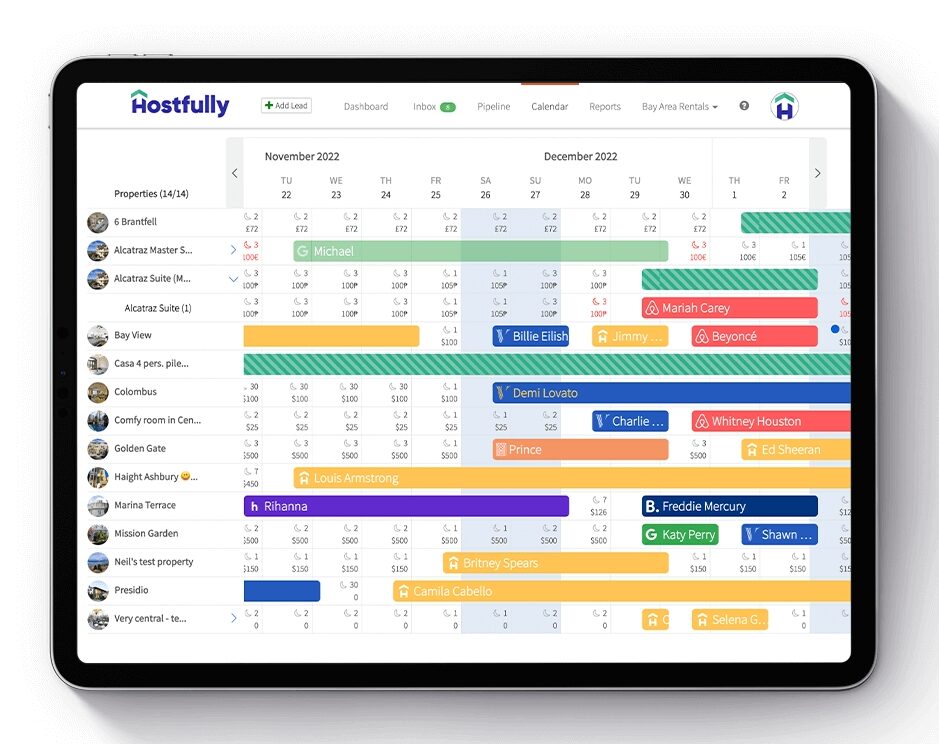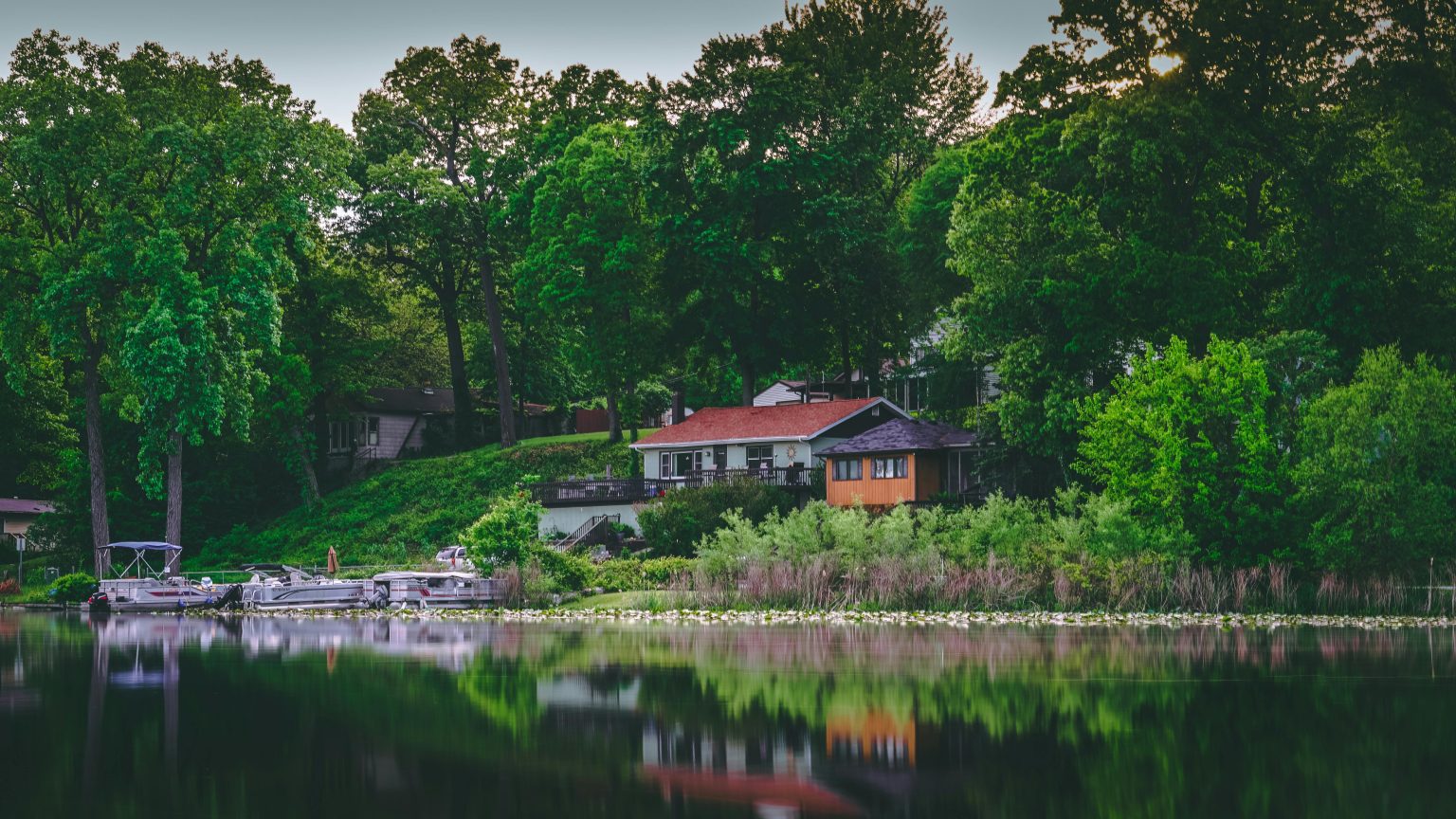If you’re getting ready to launch a short-term rental business, no doubt you want to get everything in place quickly. The sooner you’re listed, the sooner you can start welcoming guests and generating income.
You know you need a permit but the process isn’t clear. Every city seems to have its own rules and you’re unsure what the requirements are or whether you’ll even get approval. This uncertainty makes it hard to plan your next steps, especially if you’re worried about delays or rejections.
Don’t let a little red tape stand in your way. Our article breaks down the typical filing process so you know what to expect and move forward with confidence. Keep reading to understand everything from zoning laws and permit types to fees and renewals.
Short-term rental application requirements
Before you start your application, you need to have certain documents and information ready. The requirements vary across countries, states, and even cities but most local authorities usually ask for the following:
- Your name and personal tax information
- Your government-issued ID (for example, passport or driver’s license)
- Your phone number and address
- The property’s address and details
- A detailed floor plan
- Proof of ownership OR the landlord’s permission
- Certificate of liability insurance
In many cases, only the property owner can apply for the permit. You can still run your business out of somebody else’s home but you must file under their name and use their contact information.
Step-by-Step: How to Apply for a Vacation Rental Permit or License
Everywhere handles the filing process differently but there are some patterns. Popular destinations are the most likely to have comprehensive requirements as they need to regulate tourism levels and ensure housing availability. On the other hand, some quiet towns may have practically no paperwork to encourage more businesses to set up in the area.
Here’s a general idea of what to expect no matter where you launch your rental business:
1. Research local regulations
Start by finding out what business activities are allowed in the area. It’s your responsibility to check and the city council won’t necessarily refund you if you’re ineligible or apply for the wrong type of license.
Allegra Muzzillo, owner of ACM Interiors, is an experienced property manager and she says, “Over the years, we’ve really had to educate ourselves on what’s going on in our areas: Is there a very powerful hotel lobby? Are fees increasing? What other rules have they recently mandated? Is an STR issue that affects me coming up for debate in local government?”
Most local authorities have a dedicated web portal that outlines the local laws to help you understand your rights and responsibilities. Find yours by typing ‘short-term rental’ and the city or town name. You might need to add the ‘gov’ URL to narrow your results as you may get a lot of hits for nearby Airbnb and VRBO listings.

Check whether you can legally open a short-term rental in your area and the current cap on the number of businesses. Sometimes, you may need to contact the local council directly to confirm.
Additionally, Muzzillo suggests looking at unofficial sources. “We also do things like check local and national news outlets, join relevant Facebook Groups, and read through Airbnb and VRBO’s investor relations pages periodically,” she says.
Check our series of guides on short-term rental regulations to learn more about the relevant laws in your area.
2. Check zoning laws
Most places only allow you to run short-term rental businesses in certain areas. Check your city code to see what’s okay and what’s not in the zoning districts you’re considering.
As you might expect, cities tend to limit the number of short-term rental units in residential areas. They’re more permissive in commercial or business districts where tourist establishments are less likely to disrupt the community.
Note that even if short-term rentals are allowed in your area, the council will still expect you to ensure guests follow local laws, refrain from antisocial behavior, and potentially sign a short-term rental agreement. You’re liable as the license holder if they violate regulations. But sending a digital agreement and collecting an electronic signature in advance can help you inform guests and prevent many misunderstandings and issues.
If short-term rentals aren’t allowed, check to see whether you can apply for an exemption or conditional use permit instead. This usually involves filing another form with your local authorities.
Some cities require you to provide a zoning clearance form as part of your short-term rental license application. You generally need to submit a request to your local council. While you usually get automatic approval, you must wait until you have the paperwork to start applying for your permit.
3. Choose a permit type
Determine which type of permit suits your short-term rental business. They usually fall into one or two of the following categories:
- Primary residence: You live in the property for the majority of the year and use it as your legal address.
- Secondary residence: You only stay in the property for brief periods at most and never use it for official paperwork.
- Owner-occupied: You remain on site for the duration of every guest stay, whether that’s within the main property or an accessory dwelling unit (ADU).
- Non-owner occupied: You leave the property for the duration of every guest’s stay except for brief check-ins.
Additionally, some cities let you choose whether you want a permanent or temporary license. Note that “permanent” still only means one or two years here. The temporary license often comes with reduced fees and fewer restrictions on how you operate your business.
4. Gather necessary documentation
Once you’ve confirmed you can launch your business, you’re ready to start compiling the paperwork and submitting it to the local authorities.
Most cities handle all of their permit applications online so you need a digital version of all your documentation. If you haven’t already, scan and upload all your physical paperwork. Save everything to a safe place in your files in case you need to resubmit them later.
Before you attach any files, double-check all the documents are current and match your current details and address. Forms can take a few weeks to process. If something is incorrect, you may need to resubmit entirely and potentially delay your launch date.
5. Submit and pay the application fee
Visit the website portal to fill in the online form and upload all the required paperwork. This typically takes around 10 to 15 minutes if you have everything prepared in advance.
As part of the process, your city council will probably require you to pay all the fees upfront. Most accept a variety of payment methods including credit card, check, and cash. They may need you to add some identifying information such as your name, application number, or property address to transfers.
Permit and filing fees can range considerably. At the lower end, they tend to be between $50 to $150 for the year with discounts for multiple properties and renewals. But the permit fee can stretch into the hundreds in popular tourist hotspots — for example, San Francisco charges you a whopping $925 for your application.
6. Pass inspections and comply with safety regulations
Now you might need to undergo some inspections to check your property is safe for occupants. These normally cover fire extinguishers, CO detectors, and water quality.
A business representative usually needs to be present for the inspection. In some cases, the local authorities may expect the homeowner or manager to be there to sign forms confirming the inspection took place.
If you fail the inspection, the local authorities may give you a chance to correct minor issues. You can review the report and make the required upgrades. Sometimes, you may have to restart your application no matter how close you were to passing the inspection.
7. Receive approval and display permit properly
After a few business days, you should receive a response to your permit application. You can contact the local authorities for a status update if it’s taking longer than expected.
Download your permit certificate once you receive it. You may need to print and display it somewhere on the property where guests can immediately see it. Some cities require you to place it in a front window so it’s visible to neighbors and passers-by.
Before you list your property on Airbnb and VRBO, you might also need to add the permit number to your profile. These listing sites usually collaborate with local authorities to make sure hosts are complying with local regulations. As a result, they may not approve and publish your listing without a valid permit number in certain locations.

8. Maintain compliance
While the hard work is over, you must still take certain steps to maintain compliance with the terms of your permit. Any issues could lead to your permit getting revoked.
Here are the general rules you need to follow:
- Continuing to run the business type outlined in the permit
- Taking the names and contact details of renters
- Remaining in contact for any guest issues or emergencies
- Sticking to the agreed occupancy limits for every booking
- Ensuring guests adhere to local laws like quiet hours and parking allowances
- Remitting transient occupancy taxes to the government
- Maintaining the cleanliness and safety of the property
- Guaranteeing access to the required number of bathroom facilities
If there are any changes for whatever reason, contact your local authorities immediately to amend your permit. They may require you to resubmit your application but this extra one-off cost is a better option than risking a revocation or permanent ban.
9. Renew your permit
If you want to keep running your short-term rental business, you’ll probably need to renew your permit once every year or so. Muzzillo says her Massachusetts town does this annually, for example. “We set Google calendar reminders telling ourselves to write a check.”
The good news is that renewal applications tend to require fewer steps. You won’t need to check eligibility again and you’re unlikely to be required to resubmit all the same paperwork. In most places, renewal fees are up to 50% lower too.
As Muzzillo points out, the local authorities tend to support vacation rental businesses through this process too. “Typically, our town website posts STR deadlines, downloadable forms, and instructions. They also mention requirements, for example, a town official must physically tour our property.”
But stay updated with your area’s changing requirements. You may find a new law has passed meaning you need to include new documentation or apply for a different permit type in your next application.
How Hostfully Can Help Manage Your Short-Term Rental with Ease
Applying for a short-term rental permit doesn’t have to be overwhelming if you take it step-by-step. Ideally, you should know well before you submit the form if your application is likely to be approved and what type of business you can operate.
If you’re expanding across cities or counties, keeping track of short-term permits can become challenging. You might overlook a changing regulation or a renewal date, causing issues for your business.
Hostfully PMS can help you stay on top of permit applications. Our platform lets you track data like the average length of a booking or number of guests to help you classify your business correctly.
What’s more, Hostfully PMS helps maintain continuous compliance with local requirements. Through our central calendar, you can easily manage availability, dates, and guest numbers to ensure you never exceed limits. You can also share property rules and keep on top of complaints with our centralized AI inbox.

With the support of Hostfully PMS, you can clear all your regulatory hurdles to guarantee a smooth start to your new property launch.
FAQs about filing for a short-term rental permit
What is a short-term rental permit, and why do I need one?
A short-term rental permit is a legal document demonstrating that you have permission to rent out your property for brief periods, usually 30 days or fewer. It ensures your business complies with local zoning, safety, and tax laws.
How long does it take to get a short-term rental permit?
The time it takes to get a short-term rental permit varies across locations. It typically ranges from a few days to a couple of weeks but it can take longer during busy times of year. Many places will recommend you apply a few weeks to a month ahead of the next calendar year to ensure you receive your permit on time.
Are STR permit requirements different across states?
Yes, short-term rental permit requirements are different across states, counties, and individual cities. Local authorities usually set them based on their city or town’s unique needs. For example, many rural areas make getting a water quality test a part of the application process to ensure it’s safe for guests to drink.
What happens if I operate without a permit?
Operating a short-term rental without a permit can have serious consequences. You may face penalties and legal action, and have your permit revoked. Some places won’t approve future applications if you have a history of running unlicensed businesses.
How can I simplify short-term rental management?
You can simplify many aspects of short-term rental management with a property management system (PMS) like Hostfully. These tools automate repetitive processes like bookings, guest communication, and cleaning schedules.








